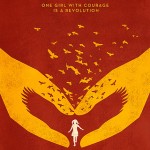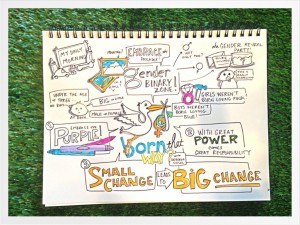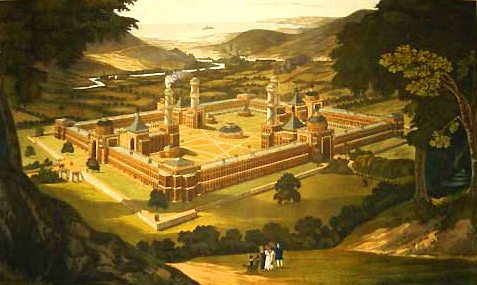 I can’t remember the last time I wanted to like a nonfiction film as much as I wanted to like Girl Rising. It promised to shed light on many of the issues I feel most passionately about: girls, education, gender-based oppression, and social inequality. Focused on the lives of nine girls around the world, the film’s creators paired nine women writers with each girl in order to write their story. A different American actor then narrates each story: Meryl Streep, Salma Hayek, Cate Blanchett, and so on. The roster of writers included several of my favorites (Edwidge Danticat, for one). So did the actors.
I can’t remember the last time I wanted to like a nonfiction film as much as I wanted to like Girl Rising. It promised to shed light on many of the issues I feel most passionately about: girls, education, gender-based oppression, and social inequality. Focused on the lives of nine girls around the world, the film’s creators paired nine women writers with each girl in order to write their story. A different American actor then narrates each story: Meryl Streep, Salma Hayek, Cate Blanchett, and so on. The roster of writers included several of my favorites (Edwidge Danticat, for one). So did the actors.
Perhaps predictably, I didn’t love it. I did like parts of it—I was moved by many of the stories and the way several of them were rendered into prose, and I left feeling with a much better sense of the complexity of the challenges facing these nine extraordinary girls. But while the film succeeded in places, it failed in others.
Let me start with what the film does well.
As Natalie X. Baker points out in Bitch Magazine, the strongest part of the film is its exploration of the “bravery and self-determination” possessed by all of these girls. Although they face significant obstacles, these girls aren’t victims. Here are some details from a few of their stories:
- Fourteen-year-old Senna lives in poverty in an Andes mining town in Peru. Named by her father after the heroine of Xena: Warrior Princess, she discovers Peruvian poet César Vallejo and memorizes his poetry, which she reenacts with passion at school competitions.
- On the streets of Kolkata, India, eleven-year-old Ruksana paints pictures and attends school. Both her parents work wherever they can and insist that both of their daughters will complete their education and go on to a better life.
- In Freetown, Sierra Leone, sixteen-year-old Mariama attends school, hosts her own local call-in radio show, and dreams of becoming a scientist.
- Eight-year-old Wadley survives the earthquake with her mother in Haiti, but they have to relocate to the Carradeux tent camp in Port-au-Prince. Although her mother can no longer afford the school fees for her daughter, Wadley pesters the teacher until she relents and lets Wadley join the class.
Like many other viewers, I found these individual stories far more compelling than what came in between: mostly, stark statistics narrated by a solemn Liam Neeson. I didn’t mind the inclusion of the actual statistics (which do provide a broader picture) as much as the mode of presentation: important facts about girls and education are presented on charming posters held by a beautiful and diverse assortment of girl child models cavorting in the fields. From garbage dumps in Cambodia to the pages of a Garnet Hill catalog.
These precious scenes on the hillside feel like ads. And they are: they are selling the issue of girls’ education. In contrast, the stories about the nine girls are moving. Even when they do not unfold in realistic modes, they generally convey a sense of the girls’ lives.
I just alluded to the fact that many of these stories push at the boundaries of documentary storytelling with playful artistic and poetic flair. Some viewers do not like this. Natalie Baker, for example, criticizes the film for letting the writers take “linguistic liberties in translating and transforming each girl’s story.” She would rather the girls speak for themselves, instead of hearing the girls’ stories as they have been shaped and crafted by writers, and then spoken by actors.
In principal, I agree with Baker—allowing subjects to speak for themselves can be crucially important for informing our understanding and knowledge about their lives and the conditions in which they live. But for some reason, the writerly interventions of Girl Rising didn’t bother me so much. For one, I trusted many of these writers, most of whom were born in the countries in which their subjects live, and many of whom have spent years navigating the tricky ethical territory of writing about others. I also liked the result in many (though not all) of the stories. And importantly, I had a sense of the process. At the beginning, the film explains that each writer spent time with her subject and then did her best to render the girl’s experience in a form that captured the truths of her life. Girl Rising isn’t “straight” documentary, and it doesn’t present itself as such.
All nonfiction is crafted, including “straight” documentary and personal narrative. So I took these stories as stories, based on each writer’s understanding of her subject. That said, I did prefer the way some of the writers approached and crafted their subject’s story more than others; some of the narratives deeply moved me, while others felt overwritten.
A larger problem emerged when stories were reenacted. In general, the girls were played by themselves—so, for example, the character of Wadley is played by Wadley, and presumably some of the other characters in her story are played by those people. But I’m pretty sure that the earthquake scene wasn’t actual documentary footage but rather a reenactment, and it seemed to me that there had to be other actors—in her story, perhaps, but also in others. (The film does tell us that the two girls who live in the Middle East, one in Afghanistan and one in Egypt, were played by actors in order to protect the girls’ identities.)
I’m not a fan of this kind of docudrama, most of all because the film didn’t signal when we were viewing reenactments. As a result, I sometimes wasn’t sure what I was watching: was it “real”? was it fiction? The film crossed some kind of line without informing me. As a result, I had difficulty gauging my emotional reactions.
If part of the success of a documentary (or of any film) is how well the story is told—how it impacts us emotionally as well as intellectually—Girl Rising failed when I didn’t know whether I should laugh or cry.
In case you hadn’t guessed, Girl Rising is a film with high production values, expertly directed by documentarian Richard Robbins, and backed by what appears to be a fair amount of money (Intel Corporation is one of the “partners” of 10×10, the “global action campaign” that produced the film, along with The Documentary Group and Paul G. Allen’s Vulcan Productions). This is neither an indie film nor the Women Make Movies documentaries that I frequently show in my Women’s Studies classes. Rather, it’s a new kind of collaboration that brings corporate money to documentary/narrative filmmaking and social issues.
This kind of collaboration generates the money and resources that documentary filmmakers, nonprofit organizations, and social programs need. But it also means that Girl Rising is part of Intel’s program of Corporate Social Responsibility. So should it really come as a surprise that the film’s good intentions get mired in what Natalie Baker calls “cinematic chivalry”? That it leaves out feminist activism on girls’ issues in these various locations? That it lacks any kind of structural analysis, as articulately pointed out by an anonymous commenter over at Bitch? (Never mentioned, for example, are the neoliberal economic policies that have contributed to the existence of school fees in countries like Haiti, or the behavior of multinational gold mining companies in countries like Peru.)
I’m not condoning these omissions. I’m just pointing out that Girl Rising isn’t about economic or political revolution. It attempts to do one thing, and to do it well: to give names and faces and stories to an issue—girls’ education—that is precisely the kind of issue that many people agree with in the abstract but which has failed to become a priority for individual governments, the United Nations, development and human rights organizations, and private foundations. 10×10 wants us to put girls’ education at the top of our list, and they want to make an impact on policy makers and donors—as well as girls in the U.S. And girls and their mothers might well constitute a major portion of the viewing audience. (While I think my nine-year-old daughter is still a little too young to watch Girl Rising, I do wonder whether the film might be particularly well-suited for middle and high school students.)
Which brings me to my last point: the film’s assumptions about its subjects and its viewers. Clearly, girls in the U.S. will be among its viewers. But what about the girls who struggle in this country? We all know that there are groups of girls in the U.S. who face extraordinary challenges in attending and graduating from school. Where are these girls? Don’t we do ourselves a grave disservice by perpetuating the idea that only girls who live elsewhere need help? How hard would it be, really, to include one segment focused on the life of one girl living in this country? That would go a long way towards breaking down the us/them binary that troubles so much U.S.-based activism—and might bring a sense of urgency to the social inequalities affecting girls’ lives here at home.
Girl Rising will premiere on June 16 at 9pm EST on CNN.

 The
The 

 Researchers study what shapes racial classification. In a novel study that looked back at how survey interviewers racially classify people over the course of their adult lives, sociologists
Researchers study what shapes racial classification. In a novel study that looked back at how survey interviewers racially classify people over the course of their adult lives, sociologists 
 It is wedding season, and a landmark year for marriage equality. Someone asked me what would be my feminist utopia for marriage, and I started thinking: Utopias are for Enlightenment thinkers, those expansive philosophers who made heady contributions… but who sometimes didn’t quite see around their own contradictions? Take
It is wedding season, and a landmark year for marriage equality. Someone asked me what would be my feminist utopia for marriage, and I started thinking: Utopias are for Enlightenment thinkers, those expansive philosophers who made heady contributions… but who sometimes didn’t quite see around their own contradictions? Take 
